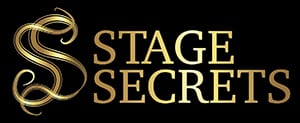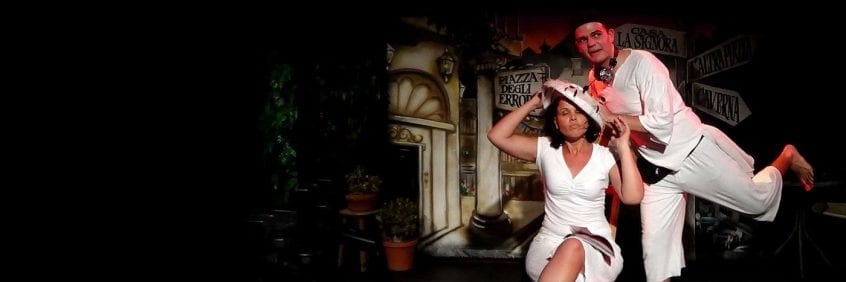Published in: Glam Adelaide, Nov 16, 2011
Author: Barry Lenny
Sore ribs from laughing was a small price to pay for such a marvellous evening. This was a rare treat to see not just one, but two terrific performances by a great master and the generation that is following him.
Presented by Corinna Di Niro.
Reviewed by Barry Lenny, 13th November 2011.
This performance consisted of two productions. The first was performed by Commedia con Corinna, Corinna Di Niro's own group, with a performance of The Marriage of Flavio and Isabella. This work was created and directed by Corinna Di Niro, with some additional advice over the past week from Antonio Fava, a Maestro of Commedia dell'Arte with whom Di Niro studied in Italy and who she has brought to Australia as part of her studies towards a PhD in Commedia dell'Arte.
The three performers in this group play ten roles between them, with Corinna Di Niro as La Signora and Arlecchino, James Lainas as Flavio, Pedrolino, Il Capitano and Bagattino, and Cinzia Schincariol as Isabella, Filomena, Pantalone and Scapino.
Commedia uses what are referred to as 'stock characters', the same group of charaters appearing time and again in various combinations in the many plays. Each character has a specific mask to identify them and a number of traits that are always the same. Il Capitano (the Captain), for example, is a braggart and fancies himself as a ladies man but, if trouble comes, he is soon revealed to be a coward. The traditional audiences would have some idea how each character would act and react in any particular situation and that consistency endeared the characters to their followers.
The three performers switch masks, costumes and characters time and again in an hilarious hour of comedy as the wedding between Isabella and Flavio is placed in jeopardy, particularly when Filomena arrives to claim him. One of the funniest moments was when Schincariol had to play both Isabella and Filomena at the same time. In the end, all works out well and the audience gets a much needed break to get their breath back after all the laughing.
Commedia dell'Arte may well be a 16th century art form but, in the hands of three such skilled, dedicated and excellent performers it is more than able to keep a packed venue in constant fits of laughter.
The second piece, Pulcinella Furioso (Furious Pulcinella), was written, directed and performed by Antonio Fava. This world première also featured Martina Sechi in various roles as the people that Pulcinella meets on his travels.
This is quite different from the first piece, being largely a solo work, with Fava speaking English and Italian, producing a range of vocal sound effects, using mime, storytelling, physical theatre and more as Pulcinella goes in search of food and love. Pulcinella rejects the first woman that he meets, Donna Zezza (the female equivalent of Pulcinella), heads off to the war, is treated badly by other women along the way and, eventually, returns to Donna Zezza again, announcing that, “she may not be perfect, but she is perfect for me”. Along the way he offers his philosophy on a diverse range of topics. It is easy to see why Fava is given the title, Maestro.
Sechi is another of Fava's students and her performance shows a strong understanding of the way that he works, complementing his performance whilst contributing superb work of her own. She offered some great comedy of her own in a range of great characterisations.
Sore ribs from laughing was a small price to pay for such a marvellous evening. It is most encouraging to see that such a great tradition, that is the basis of so much of our modern entertainment, is being kept alive and authentic. This was a rare treat to see not just one, but two terrific performances by a great master and the generation that is following him.

